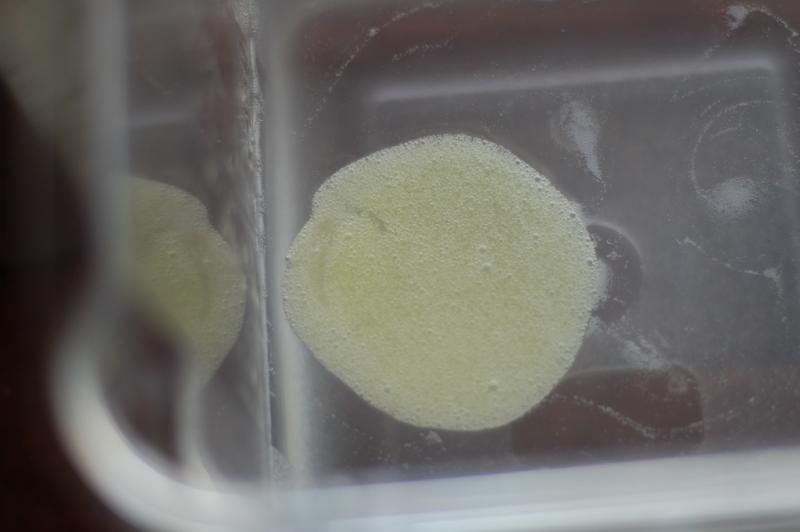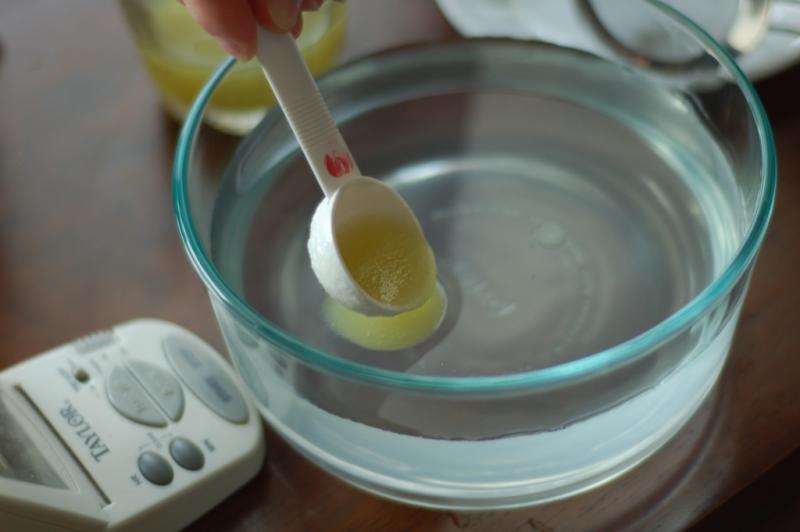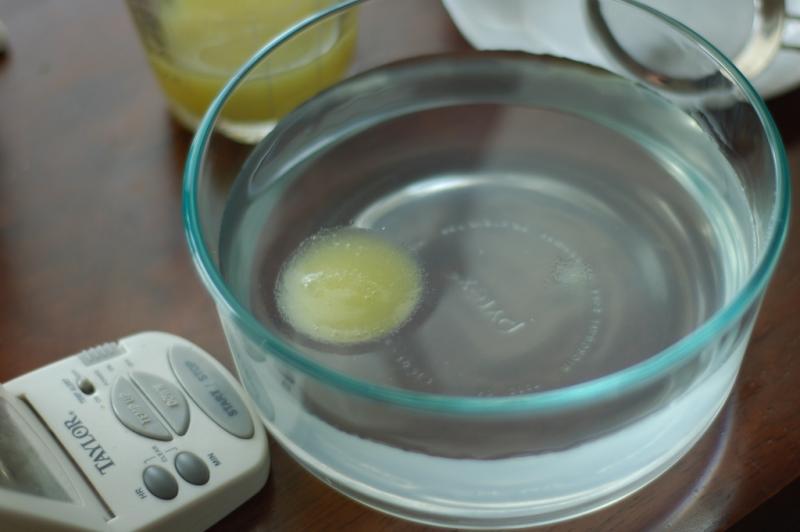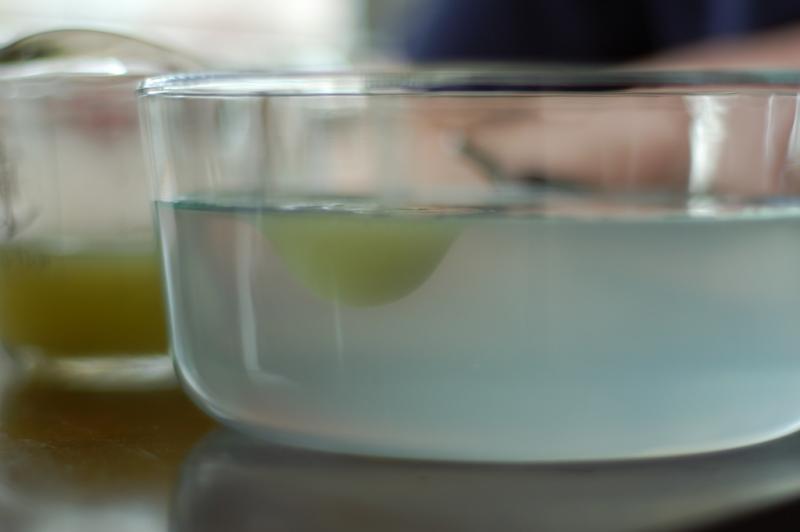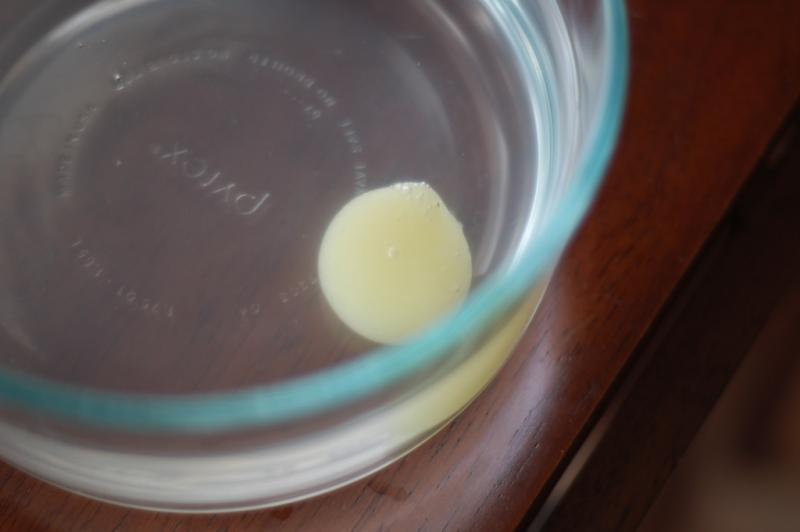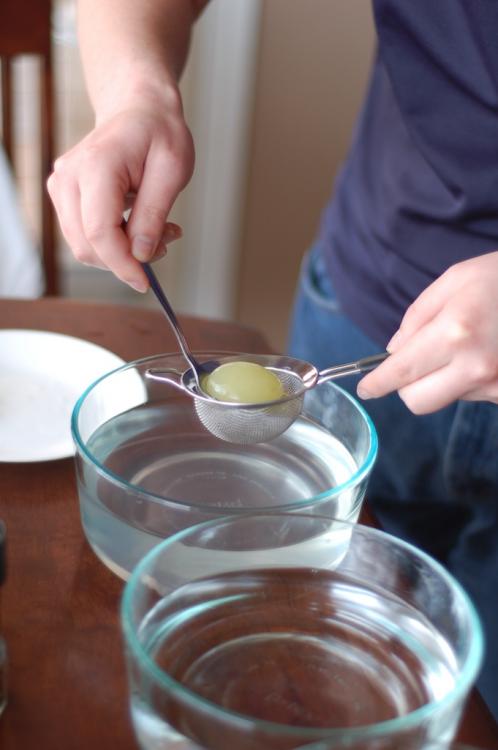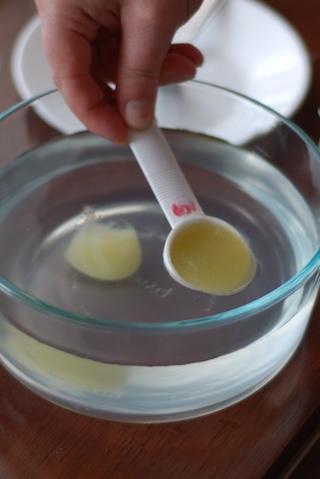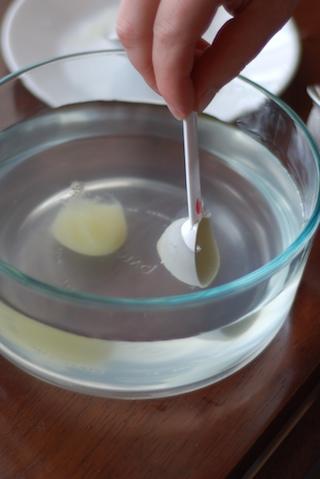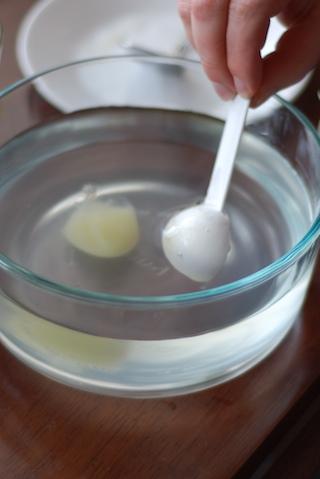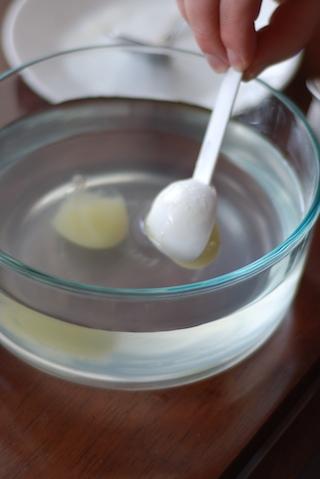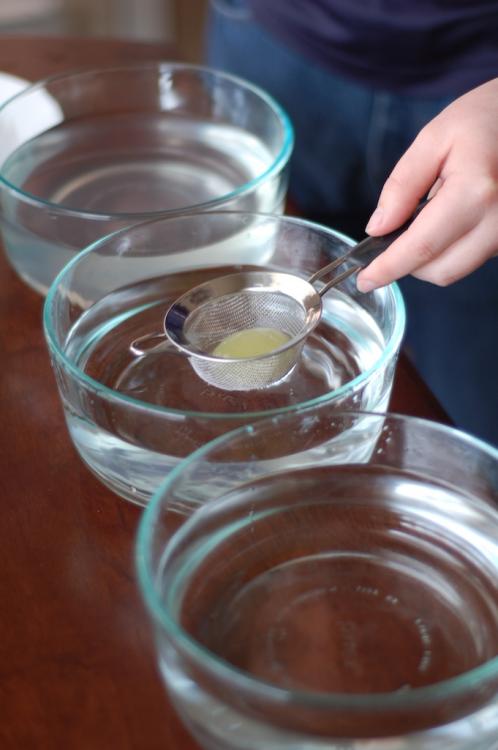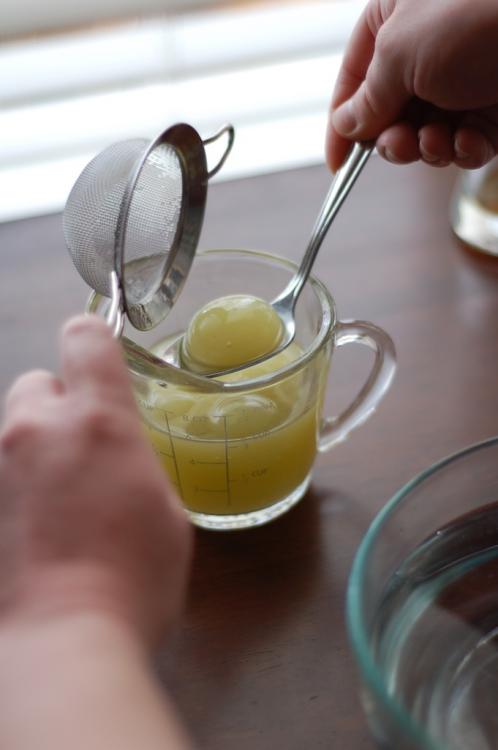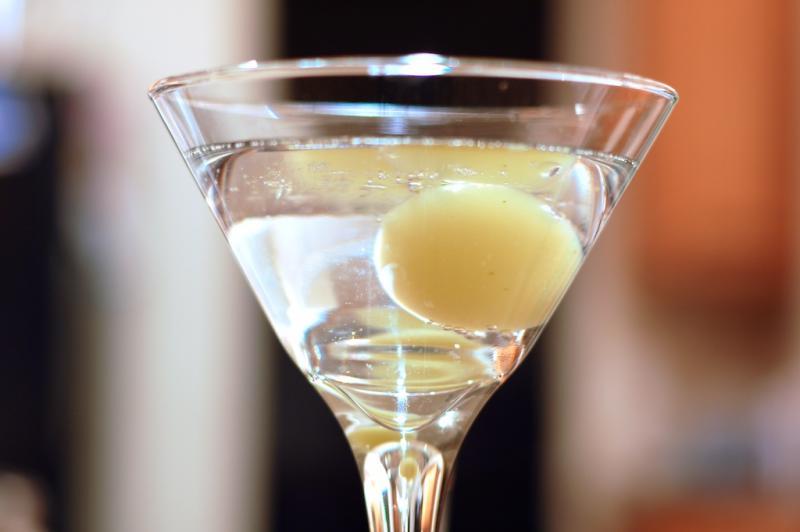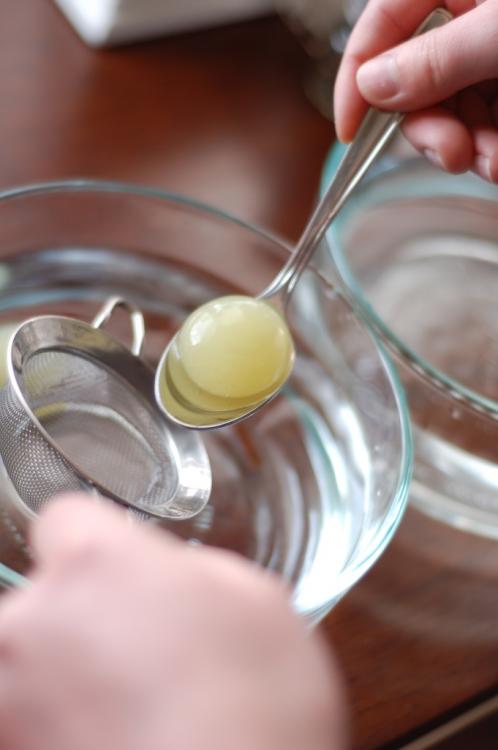-
Posts
10,190 -
Joined
-
Last visited
Content Type
Profiles
Forums
Store
Help Articles
Everything posted by Chris Hennes
-
I'm not sure how many of the ingredients in the kit overlap with branded items. For example, all the calciums and sodiums are pretty generic. The Tapioca Maltodextrin is one, and the xantham gum is sometimes requested as the Texturas-kit item. But the various sodiums and calciums seem to get cited unbranded. And the distinct advantage of the kit is that you can buy smaller quantities. It looks like otherwise you're looking at buying 1000g of most of these things, which is way more than I expect to need.
-
Like a mojito . Which is to say, the modernist-y ingredients and techniques didn't affect the flavor. I generally like my mojitos with a more acidic punch, but I wanted to follow the recipe to the letter the first time I made it. I'm not sure what effect increasing the acidity will have on the gelling.
-
So that others may learn from my many mistakes, here they all in all their glory. I hope to look back on this post one day from a position of great spherification knowledge and shake my head at my past foolishness. As I mentioned above, with the first attempt I used a blender to do the final mixing, including the xantham gum. The calcium takes a while to dissolve, so I wound up blending for quite some time, and because of the viscosity added by the xantham the bubbles were held in suspension. The end result was that the liquid floated in the bath: For batch two I used a hand whisk to combine the ingredients, and I didn't add the xantham until the calcium was dissolved: this worked much better at making sure there were no air bubbles. But this being my first spherification attempt, and having not read the book closely enough, the first attempt with the new batch was better, but still not right. I was sort of pouring the liquid into the bath from a short height... So it sort of floats on the surface, with the surface tension being enough to keep it afloat (barely): Here's a side view of that effect: Looking more closely at the book shows the flaw in this technique, so attempt two (which actually works) was to actually try to release the liquid under the surface of the bath by sort of dunking the spoon in and rotating it. Here is that sequence... And the sphere beginning to take form I don't have a good spoon for this so I had to use a strainer and a regular spoon. The spheres are removed from the alginate bath: And then rinsed in water twice to stop the gelling: They are stored in an additional amount of the filling ingredients (minus the xantham gum and calcium) The carbonation is achieved with a ISI Thermowhip and three charges of nitrogen (one to purge the container and two to charge it). Five hours in the fridge, and you have carbonated mojito spheres, like so: That's served in a glass of tonic, because I wasn't sure what else to do. All told this was a fun experiment, but there are a few things I would change if I were to make it again. First, I think I'd make them smaller: I was using 10-15 mL of fluid per ball, which is about the size of a small egg yolk. I think that was too big, and that 5-7mL would be easier to eat. Second, I'd like to make the skin thinner: these seemed more resilient than necessary (though maybe the carbonation is hard on them and the thicker shell is needed for that). Finally, I need to come up with a better way of serving them: they don't pack enough flavor punch to be dropped into tonic like this. I think maybe serve them alone, on a small spoon, as a sort of amuse bouche.
-
Is that the shrimp cocktail recipe in volume 3? That one is 60°C for 7 minutes (for the size it says 8 tails should be about 200g).
-
My coriander grows itself, quite literally, I don't even have to plant seeds: just let it go to seed and dry out a while before cutting it down and harvesting the spice, it self-seeds quite nicely. The only trick is if you actually want the cilantro leaves from the plant, because it doesn't take heat well and goes to seed immediately when it's hot: no more cilantro at that point. I have not grown dill in a few years so I don't recall if I had any issues with it.
-
So, in a recipe that calls for 40 spheres, I managed to make nine. Still... nine spheres! This is my first spherification attempt, so I'm sort of proud of the things, really. This is unlike any other cooking I've done. I had to play around a bit with the amount of xantham gum to get them to hold together and to sink properly because it clumped up on my when I first added it. Then, it turns out that it takes a bit of practice to get the stuff to scoot into the alginate bath without surface tension holding it to the top. But... nine! They are carbonating now. Here's a preview of what they look like (basically like greenish egg yolks):
-

Curing and Cooking with Ruhlman & Polcyn's "Charcuterie" (Part 6)
Chris Hennes replied to a topic in Cooking
There is plenty of salt in there, and the drying action itself is helping you out: the water activity should be quite low: so from a food safety standpoint I think it's not an issue. I am not sure what the advantage of going so low is, though, I'd just go with the instructions on your dehydrator. -
You need 100g in each of two siphons to do the whole batch: my plan at the outset was to only carbonate half of them, since I only have one siphon. And even then you wind up with about 70g of leftover liquid. So I reserved 100g for the carbonation step, and am using the other 100g + extra 70g as my attempt #2, which actually works out quite well, quantity-wise. But I'm remembering now why I ended up blending the hell out of it: the calcium lactate is having trouble dissolving. But this time I turned my brain on, and have not yet added the xantham gum, so I can mix to my heart's content.
-
Nope. Bubbles are too fine: moving on to plan C... The recipe actually makes a bit more liquid than you need, so I have 170 extra grams, I'm going to try again with that.
-
Not a chamber sealer, but maybe it would help... I'll try it.
-
Damn, screwed it up. In the step where you blend the gelling agent into the other ingredients I got overzealous with the blender (probably I was supposed to be using a whisk, eh?). Now my mixture has tiny air bubbles suspended in it, which makes it float: so I get gel pancakes instead of spheres (and they are only gelled on the bottom). Back to the drawing board, I guess.
-
This is an area where el cheapo gas stoves (like I've had in past apartments) outperform their fancier high-end brethren: the cheap stoves have thin, crappy prongs supporting the posts. These tend to cool down quite quickly when the flame gets turned down. But you are pretty screwed if you've got those gorgeous cast iron continuous grates that you find on the high end gas stoves: those suckers hold way more heat than even my electric smoothtop, which I think does take a while to cool down. It's something you adapt to in either case, though.
-
I don't think it quite registered just how much mint 80g is! Wow, these suckers are going to be strong.
-
No worries, the brewing store had it... off to make the first stage of the recipe...
-
I extoll the virtues of my electric smoothtop to anyone who will listen. In my opinion the ease of cleanup is all it needs to make its case. I love it, and hope never to be forced to use gas or an electric coil ever again (except my wok burner, which I also love, but which cannot be used indoors!).
-
I'm hunting down ascorbic acid to make carbonated mojito spheres (p. 4•188): I am thinking a home brewing store might have it. Any other sources I should be looking at? Also, the final instruction is to place the spheres in "cocktails"... the recipe is from Andrés, does anyone know what cocktail he served them in? In the photo it looks like it might just be club soda or tonic water, but I guess it could be a G&T, too.
-
Interesting: what temp are you frying at the cornstarch is not browning up? I wonder if you could cheat and add something to accelerate the browning action.
-
Does that make char a desirable outcome, or simply an unfortunate byproduct? Again: the standard that describes the ideal finished pizza is quite specific. And it does mention the color of the crust: If char were important to what makes a pizza "Pizza Napoletana" I believe the standard would say so. I can only conclude that char is a byproduct, at best neither desirable nor undesirable, but not important to the definition or quality of the pie. So whether or not the metal plate produces it is simply irrelevant: the pizza meets all other end-product specifications (to my eye, based on the photos in the book; and based on the statements of the authors, whom I think are sufficiently credible).
-
In light of the oyster-copying episode, it's interesting to read Blais's comments about culinary plagiarism here at eG, from way back in 2006.
-
I like 3-4 inches so that when you are deglazing it the liquid doesn't slosh over the sides. Maybe I'm just a slob, though.
-
Right, that makes sense Max: as we wrote in Rule Number One:
-
A little bit of both, Mike. What they say in particular is: So then the goal is to cook faster on the theory that faster=better:
-
I dunno about that: in an oven of those specs with a dough of those specs and ingredients of those specs, by that argument there is no need to include a description of the final product at all... it's a given. And yet they list out very particular descriptions of the crust's qualities, and the qualities of all the other ingredients as well, going to far as to list final temperatures. I'd think that if char were so important to the quality of the pie, they would say something about it.
-
I personally shy away from the notion of first-person statements in this sort of writing: in a wiki article edited by ten people, who is this "I" character anyway? Maybe it would make more sense to me if I saw it in context... want to start an article?
-
Perhaps one way around this is to use inline citations only when the need seems clear, and to make an "Additional references" section to cover the rest. Does that work? Regarding articles that need citations: the charcuterie category would be a good start, there is widespread disagreement about the definitions of all that stuff. http://wiki.egullet.org/index.php?title=Category:Charcuterie


